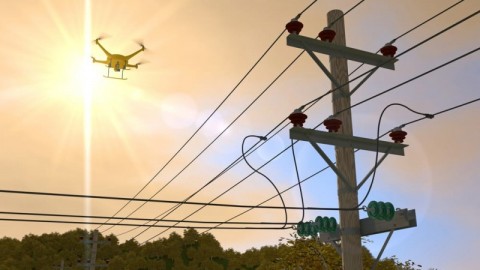Australia’s booming population growth has created a need for new water infrastructure and increased maintenance on existing assets to cater for the growing demand. With so many projects underway it’s essential that they are managed efficiently at all levels and that contractors are competent and compliant with a variety of legislative and safety requirements.
With such a high number of water infrastructure projects geographically spread across Australia, there are a greater variety of contractors engaged to complete the maintenance and project work which requires more effective real-time systems that will add value and increase efficiency.
This means utilities and contractors need to know who’s doing what (and where) and what work is planned, to ensure projects run on-time. Additionally safety legislation is a major consideration, have all risks been identified and managed? Are workers able to simply report incidents?
In its recent report Reforming Urban Water: A national pathway, Infrastructure Australia outlined ‘Meeting the needs of a growing population’ as one of the main challenges facing the urban water sector.
The report, released in late 2017, said that to deal with population growth and the strain it’s causing on current water infrastructure, water services must take advantage of ‘shifts in technology and processes’.
The report states that technology can be an enabler of change in urban water and that “greater access to real-time information could hold benefits for customers and suppliers”.
It’s this ‘real-time information’ that helps manage projects when there are many different contractors and moving pieces. For contractors and utilities to have access to real-time information they must have digitised systems in place, as paper-based systems don’t provide vision, efficiency or accurate communication.
Digital systems increase efficiency
Digitising paper-based processes helps support collaboration and communication across projects; create efficiencies across an organisation as it removes manual admin tasks; and allows for projects to have auto-generated real-time notifications which supports asset management.
FiNAO is a solutions provider that works with organisations to digitise their paper-based forms and processes by creating an online system offering automatically generated notifications, automated workflow and real-time reporting.
FiNAO Director, Terry Down, said the main thing contractors are looking for in water infrastructure projects is to know what’s happening where and in real-time, so they can make informed decisions based on relevant data.
Relevant data can include contract variations or types of defects. This real-time reporting feature (on relevant data) is a point of difference of FiNAO’s systems.
“Traditionally, through paper-based systems, there were delays in getting information to the right people, but our online management systems ensure users at all levels are getting the relevant information that they need in real-time,” Mr Down said.
“This allows for real-time planning so clients know what’s going on right now on their sites and they can plan more efficiently for this afternoon, this evening, tomorrow, the next day and so on. Using our systems allows them to measure progress, as well as reduce supervisor admin time by around 60 per cent, as they now only need to enter data once. Supervisors can then spend
more time doing the jobs they need to, rather than menial admin tasks.
“The other challenge that we’re helping to combat is ensuring contractors and supervisors are competent and compliant the whole time. Previously, if someone became noncompliant there could have been a lag between the expiry of certification, insurances or tickets without knowing. Now they know in advance and can make appropriate decisions.”
Not digitising operations runs the risk of having outdated and incorrect information on projects which can cause a variety of problems. Real-time reporting makes projects more efficient, which in turn supports the overwhelming number of water infrastructure developments and maintenance projects across the country.
“As soon as you generate a report or download data and distribute within an organisation, it can become out-of-date. Whereas, if you send people an email with a link to the appropriate data or report, when they click it they get the real-time information. Data can change rapidly and organisations need to have the latest information to make informed decisions,” Mr Down said.
Planning staff resources and unlocking value
A fully automated system helps organisations unlock more value from their assets and projects by generating automated notifications and reminders when, for example, maintenance is required, based on the data entered and specific business and/or organisational requirements. This can ultimately lead to better services and more efficient resources at lower costs.
FiNAO’s online management systems are different because they are off-the-shelf solutions that can be customised to specific business requirements. Organisations can create a system that is directly tailored to their specific needs. A FiNAO system is scalable and flexible, and can grow and adapt as the business develops and needs change.
“Our systems are able to generate reminders for maintenance and services in real-time so asset managers don’t have to be continually checking spreadsheets and manual systems – it’s a completely automated process from start to finish.
“It also allows you to get the right resources involved at the right time and ensures they are available. Based on current requirements and/or work planned, you can assess what resource is required in the future months. Even with high risk and/or specialised work, you know what compliant resource you have so you can then plan and schedule that work around resource
availability.
“For example, we have created systems for Sydney Water that plan specific resource activities over the next three months based on current requirements. So when a manager asks, ‘What resources do I need for these activities over the next three months?’ they can see exactly what they’ve got planned out (based on current FTE), which allows them to better plan ahead for
managing assets, resources for the work that needs to be done,” Mr Down said.
FiNAO has two major systems in place at Sydney Water: the Delivery Management data portal and the SWConnect system.
Sydney Water’s Delivery Management team delivers most of Sydney Water’s capital investment program so they have to ensure projects are delivered safely, on time and within budget, and with minimal impact on the community and environment.
To do this, the team needs to manage hundreds of project sites. The Delivery Management data portal custom system allows Sydney Water to on-board hundreds of staff and projects and using the system, work is allocated and managed as part of a collaborative contracting model.
The online system tracks and manages the progress of multiple construction projects (of various values) in line with GC21 contract conditions utilising accredited management systems compliant with ISO 9001 – 14001/AS4801 and Australian Federal Government Safety Commission accreditation scheme.
“Whether you’re a big company like Sydney Water or you’re just trying to meet your legislation and safety requirements, you need to be able to effectively collaborate and communicate with your people. Our systems allow this at all levels, so businesses can explain what’s going on, particularly to people like the unions and the board. Digitisation allows this to happen very quickly.”

If your business is keen to explore the game-changing opportunities for digitisation within your organisation, FiNAO is offering Utility readers with a complimentary consulting session. For more information on how FiNAO can create an online management system with real-time reporting for you, head to finaomanagementsystems.com.au or contact Terry Down at [email protected] or 0413 481 070.
This partner content is brought to you by FiNAO. For more information, visit finaomanagementsystems.com.au.


















